The Downlink • Sep 29, 2023
With an eye to the future
Space Snapshot
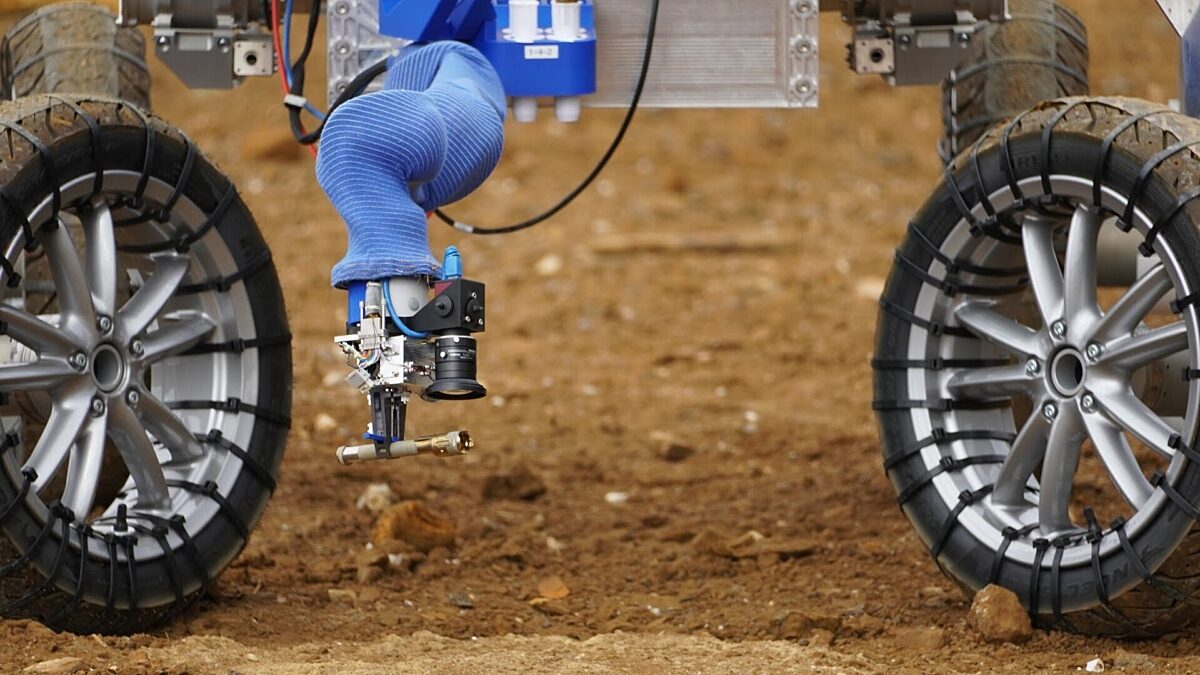
The European Space Agency is preparing for the future of Mars exploration. ESA’s Sample Transfer Arm (pictured) is undergoing testing in preparation for the internationally collaborative Mars Sample Return campaign. It will be carried aboard a lander that will detect and collect the small sample tubes that NASA’s Perseverance rover has been filling and caching for return to Earth. The entire Mars Sample Return program’s future is currently uncertain, but The Planetary Society will continue advocating for a robust and balanced planetary science program. Image credit: Airbus.
You love space, now take action
This weekly newsletter is your toolkit to learn more about space, share information with your friends and family, and take direct action to support exploration. Anyone can subscribe at planetary.org/connect to receive it as a weekly email.
Mission Briefings
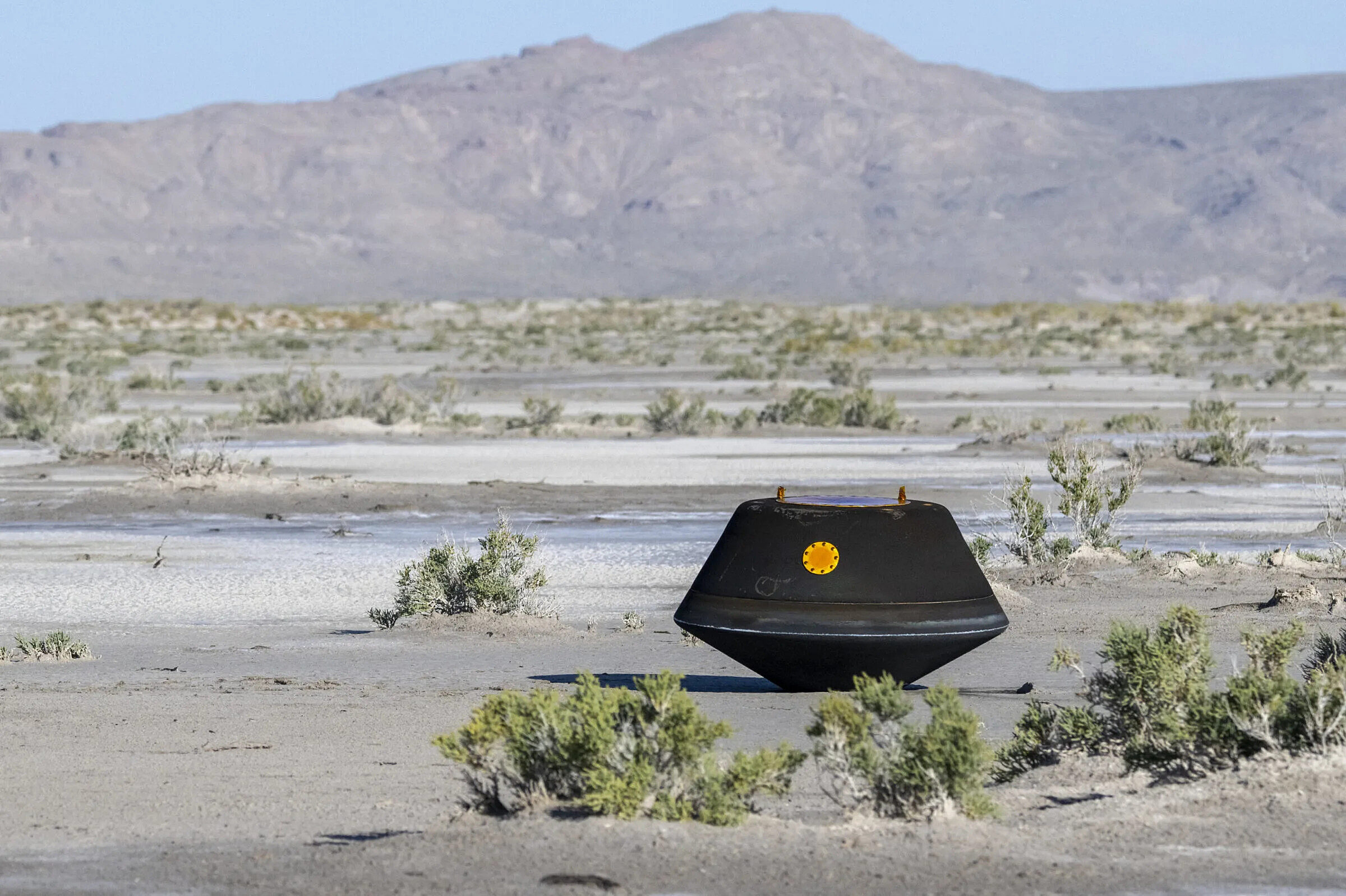

OSIRIS-REx successfully returned its sample to Earth. On Sept. 24, NASA’s OSIRIS-REx spacecraft delivered a sample of asteroid Bennu to Earth, completing its seven-year mission that spanned 7.1 billion kilometers (4.4 billion miles). The sample return capsule (pictured) landed in the Utah desert as planned on Sunday morning, containing roughly 250 grams (a half-pound) of material from the asteroid. Image credit: NASA/Keegan Barber.

Three astronauts have returned to Earth after a year in space. On Wednesday, a NASA astronaut and two Russian cosmonauts touched down on Earth after spending over a year in space. What should have been a 180-day mission turned into a 371-day stay after the Soyuz capsule they were meant to return home in was hit by a micrometeoroid or piece of orbital debris while docked to the International Space Station, losing all its coolant.

Earth’s magnetic field might be responsible for the Moon’s water. New research using data collected by India’s Chandrayaan-1 lunar orbiter in 2008 and 2009 suggests that the Moon’s interaction with Earth’s magnetosphere — the area of space around Earth controlled by the planet’s magnetic field — might affect the formation of water on the lunar surface. Further research into this is expected to take place as part of the internationally collaborative Artemis program.
From The Planetary Society
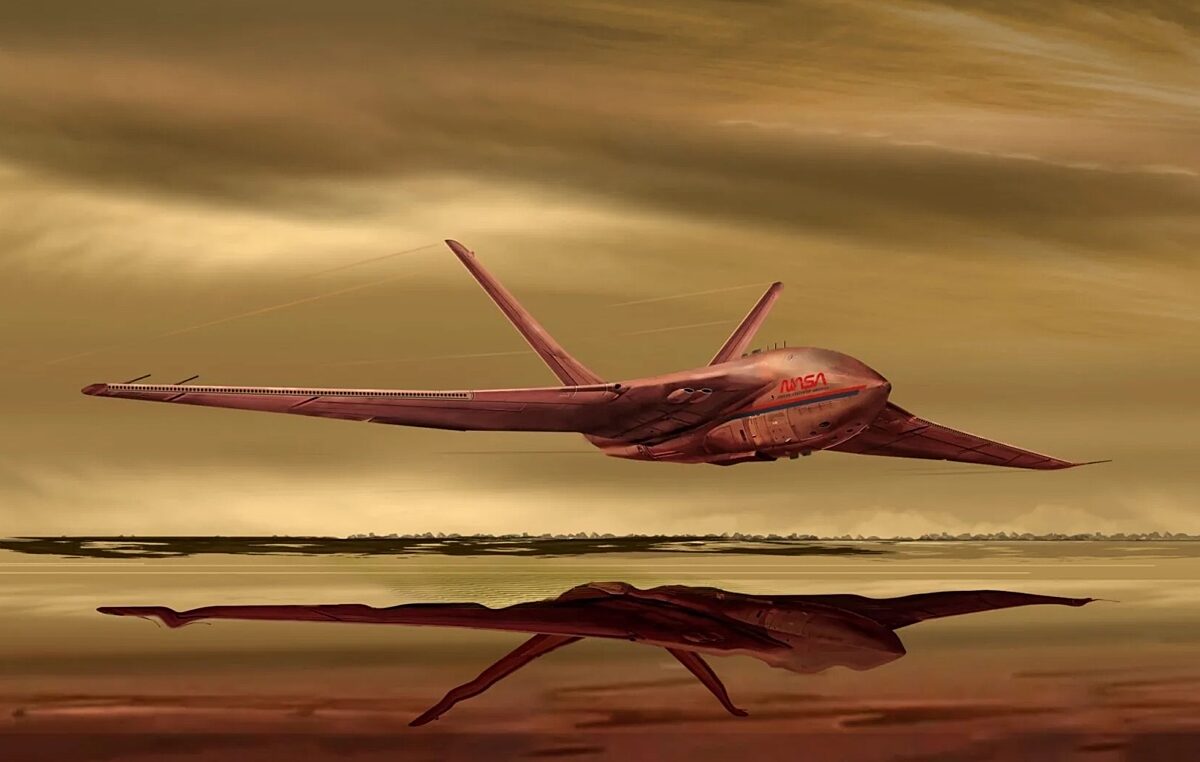

NASA’s Innovative Advanced Concepts program never fails to impress. This unique program funds visionary ideas that have the potential to change the future of space exploration. Planetary Radio host Sarah Al-Ahmed attended the annual NIAC Symposium this year, bringing you interviews with several NIAC fellows whose projects — from self-growing lichen structures on Mars to a 50-meter telescope made using fluidic shaping in microgravity — challenge our assumptions about what’s possible in space exploration. Pictured: An artist’s concept of a flying spacecraft that would “drink in” and analyze Titan's methane rain. Image credit: Quinn Morley.

You don’t need to be in the path of totality for a totally awesome eclipse experience. Partial eclipses are beautiful and fascinating celestial phenomena that are visible over much greater areas than total or annular eclipses. If you live in North America, chances are very good that you’ll be able to see two in the coming year: on Oct. 14, 2023, and April 8, 2024. Here’s why it’s worth getting outside, getting a pair of eclipse glasses, and looking up.
What's Up

Very bright Jupiter is up in the east in the mid-evening, with yellowish Saturn already high up after sunset. Look for the Moon near Jupiter in the sky on Oct. 1. And in the pre-dawn east, super bright Venus is hard to miss. Find out what October’s night skies have in store for you.
Double your impact
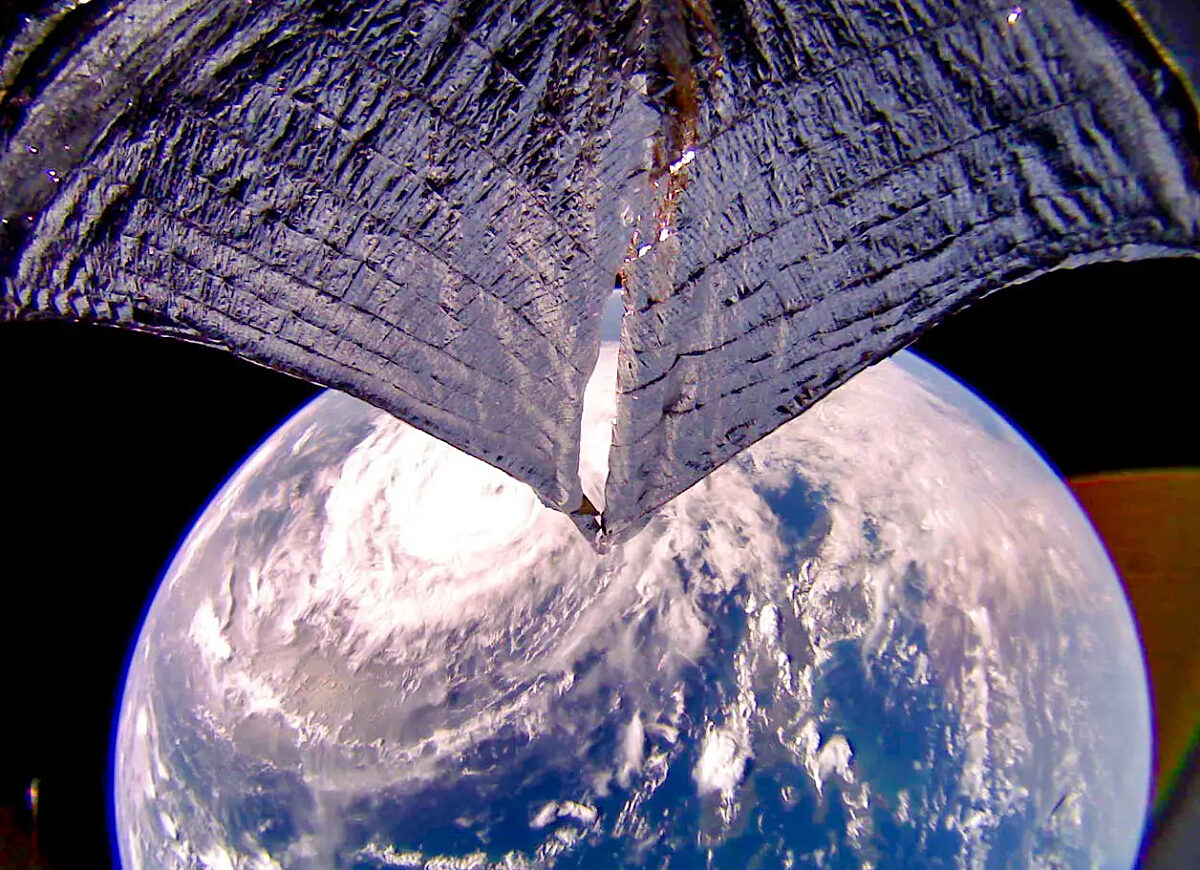
LightSail 2’s time in space may now be in the past, but with your help the mission’s impact will continue on into the future. A group of generous Planetary Society members have come together to issue an impressive $18,000 flash match challenge to secure LightSail’s lasting legacy. This week only, when you make a donation in support of LightSail's legacy, your gift will be matched for twice the impact. Learn more and make your contribution today.
Wow of the Week
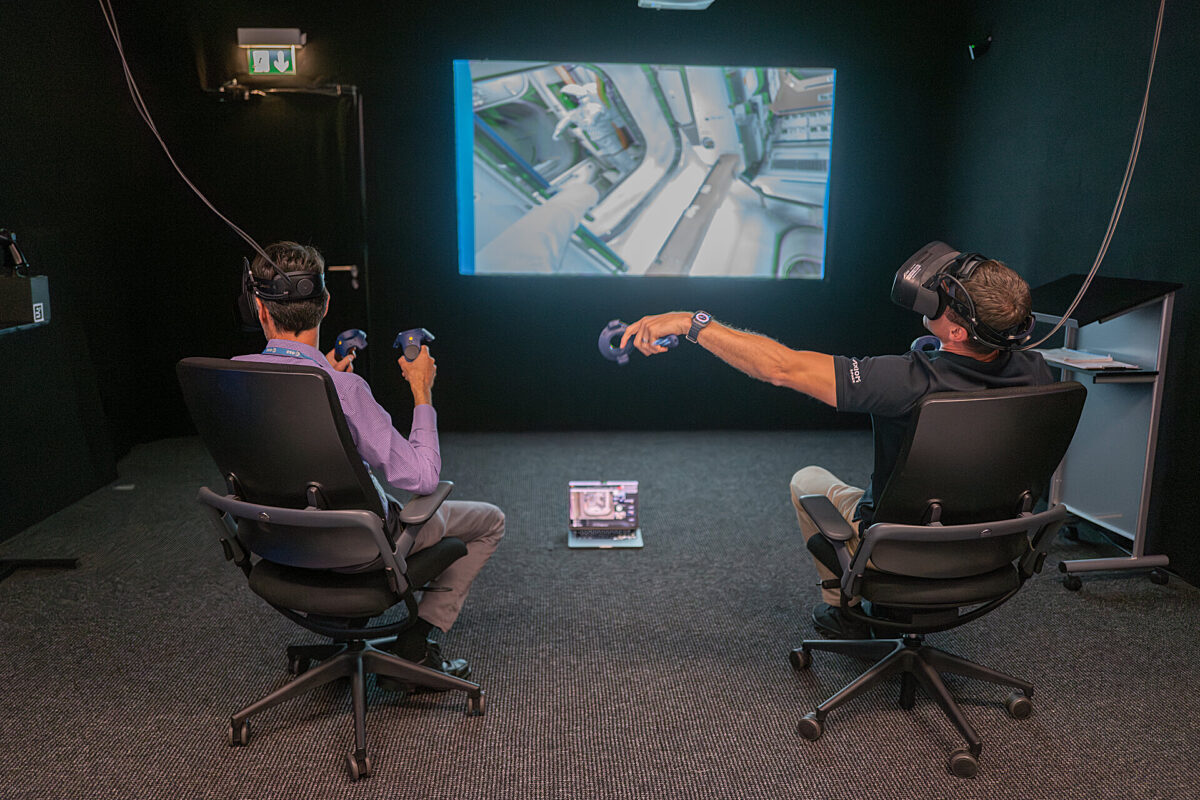
Virtual reality isn’t just for fun; it can also help prepare astronauts for spaceflight. ESA astronaut Marcus Wandt (right) used a new virtual reality experience to immerse himself in a simulated 3D environment of the International Space Station. Using hand controllers he was able to navigate through the space station’s modules to learn their layout and practice important tasks like operating science payloads, extinguishing fires, and closing hatches in zero-gravity, all while still here on Earth. Image credit: ESA / P. Sebirot.
Send us your artwork!
We love to feature space artwork in the Downlink. If you create any kind of space-related art, we invite you to send it to us by replying to any Downlink email or writing to [email protected]. Please let us know in your email if you’re a Planetary Society member!


 Explore Worlds
Explore Worlds Find Life
Find Life Defend Earth
Defend Earth


